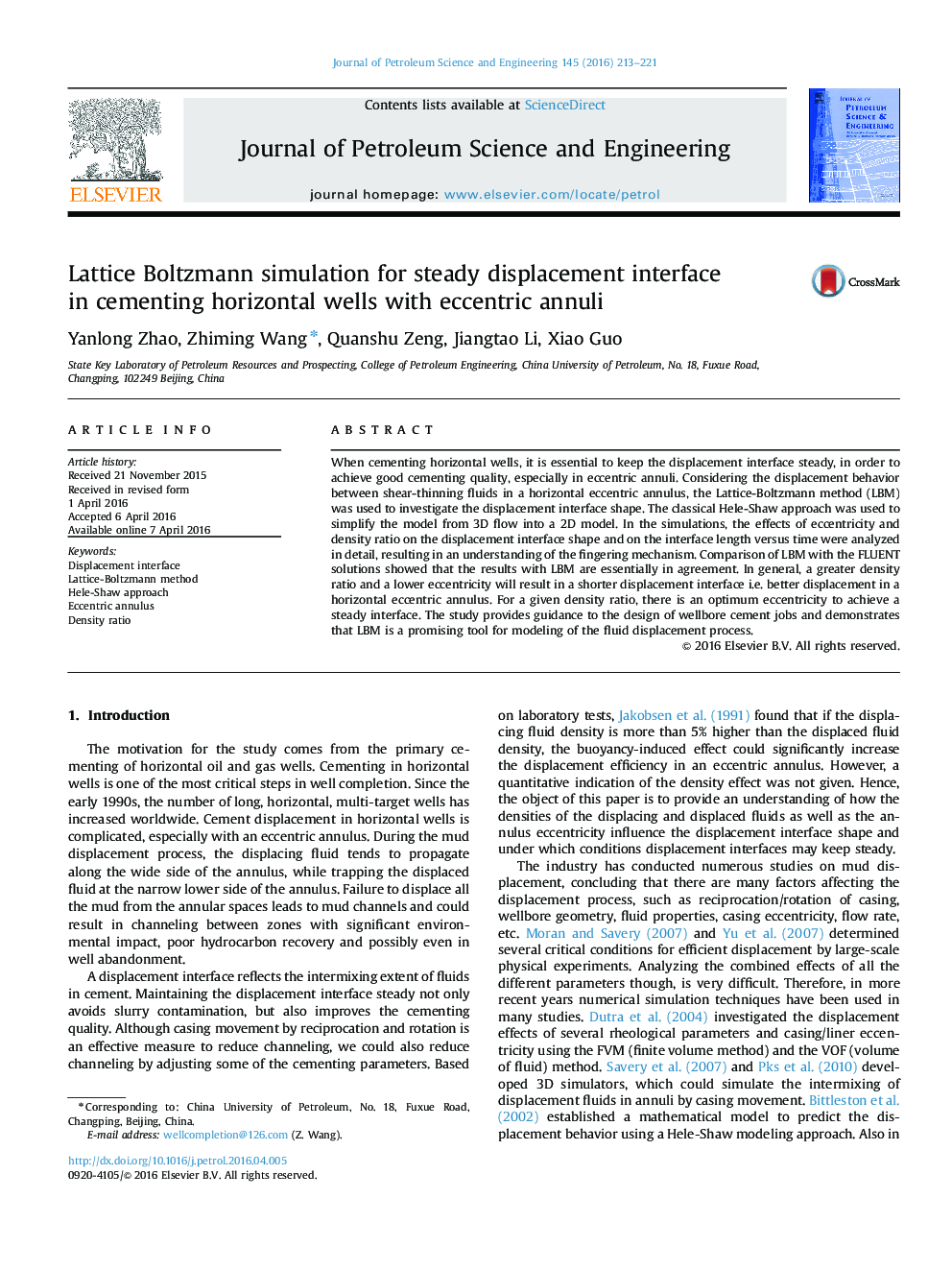| Article ID | Journal | Published Year | Pages | File Type |
|---|---|---|---|---|
| 8126093 | Journal of Petroleum Science and Engineering | 2016 | 9 Pages |
Abstract
When cementing horizontal wells, it is essential to keep the displacement interface steady, in order to achieve good cementing quality, especially in eccentric annuli. Considering the displacement behavior between shear-thinning fluids in a horizontal eccentric annulus, the Lattice-Boltzmann method (LBM) was used to investigate the displacement interface shape. The classical Hele-Shaw approach was used to simplify the model from 3D flow into a 2D model. In the simulations, the effects of eccentricity and density ratio on the displacement interface shape and on the interface length versus time were analyzed in detail, resulting in an understanding of the fingering mechanism. Comparison of LBM with the FLUENT solutions showed that the results with LBM are essentially in agreement. In general, a greater density ratio and a lower eccentricity will result in a shorter displacement interface i.e. better displacement in a horizontal eccentric annulus. For a given density ratio, there is an optimum eccentricity to achieve a steady interface. The study provides guidance to the design of wellbore cement jobs and demonstrates that LBM is a promising tool for modeling of the fluid displacement process.
Related Topics
Physical Sciences and Engineering
Earth and Planetary Sciences
Economic Geology
Authors
Yanlong Zhao, Zhiming Wang, Quanshu Zeng, Jiangtao Li, Xiao Guo,
